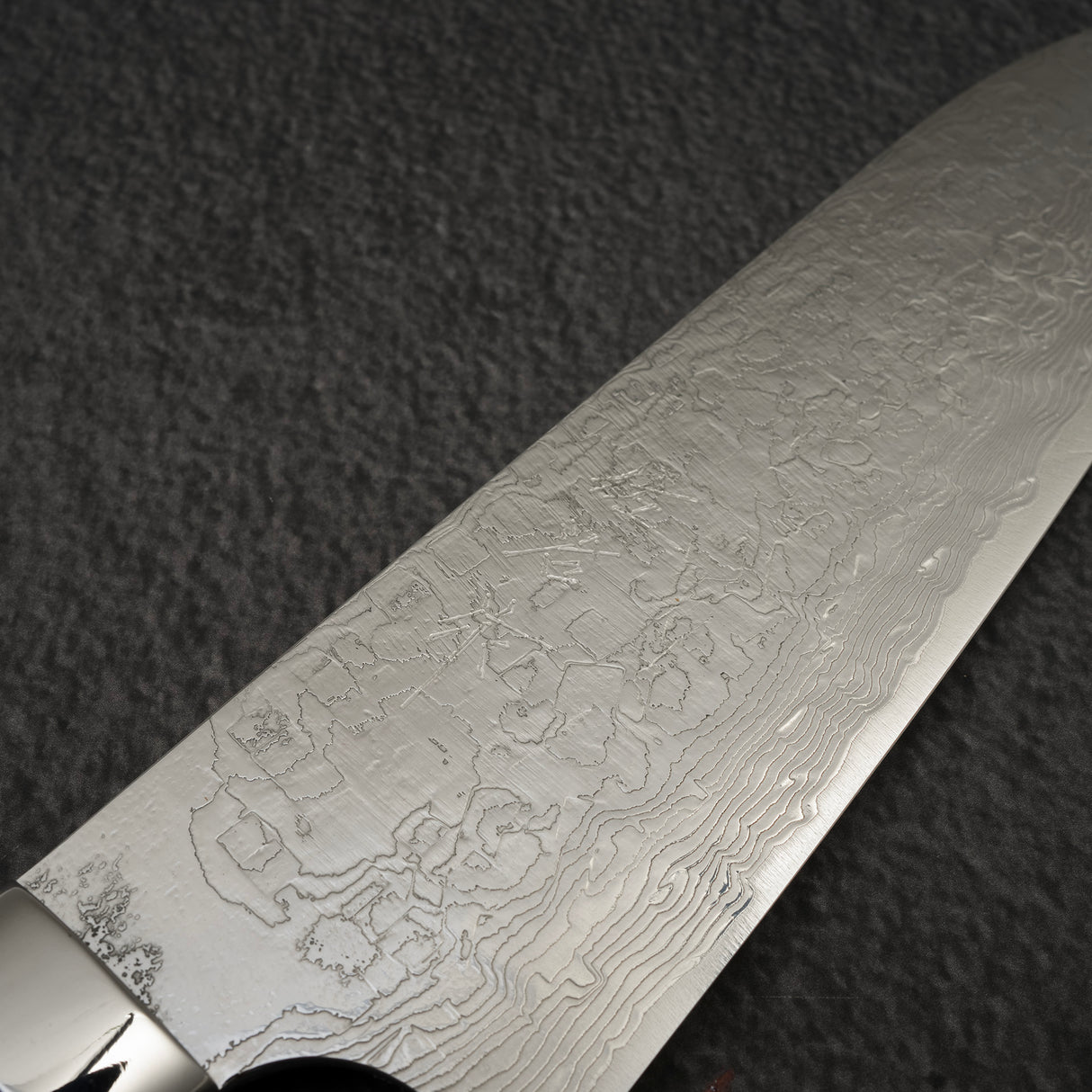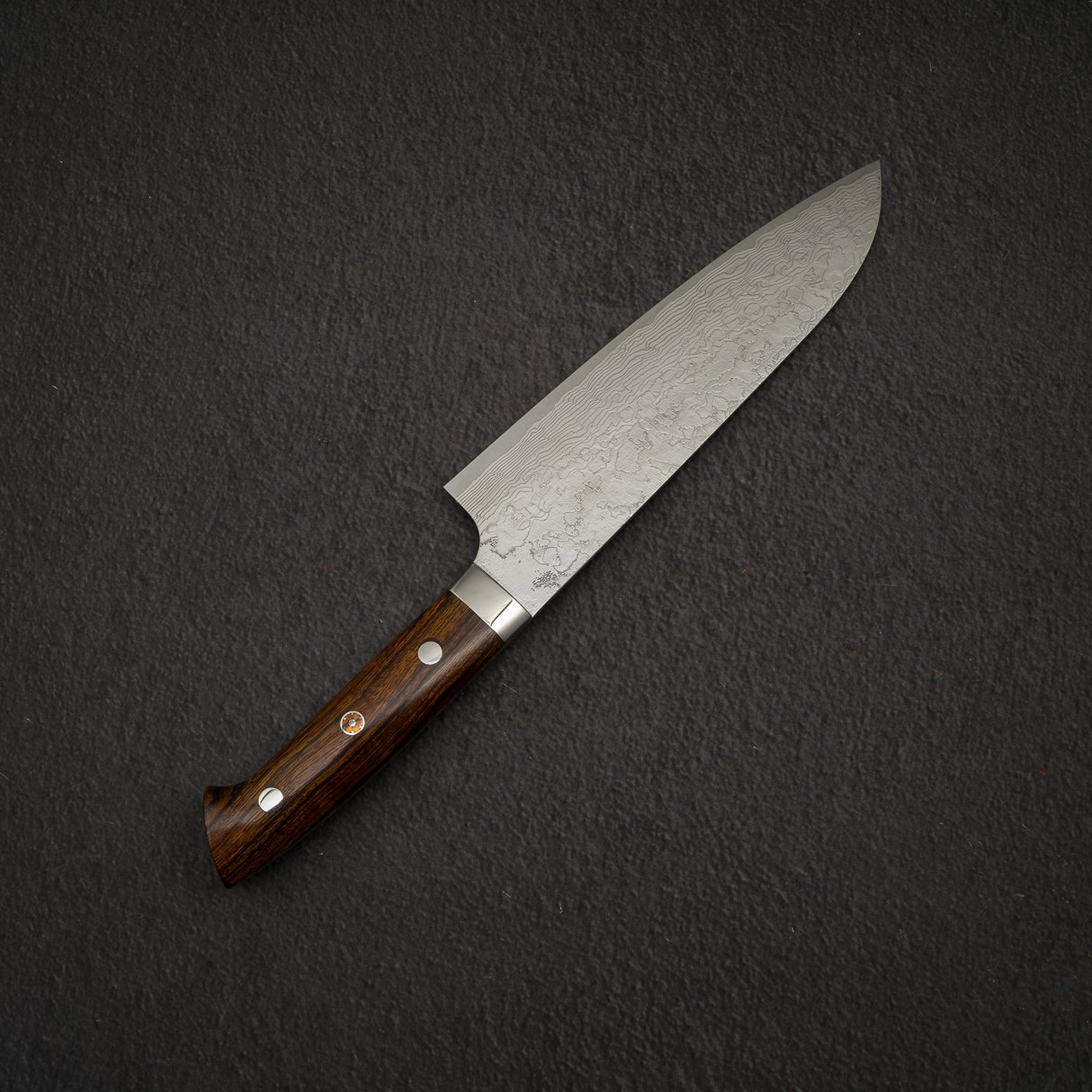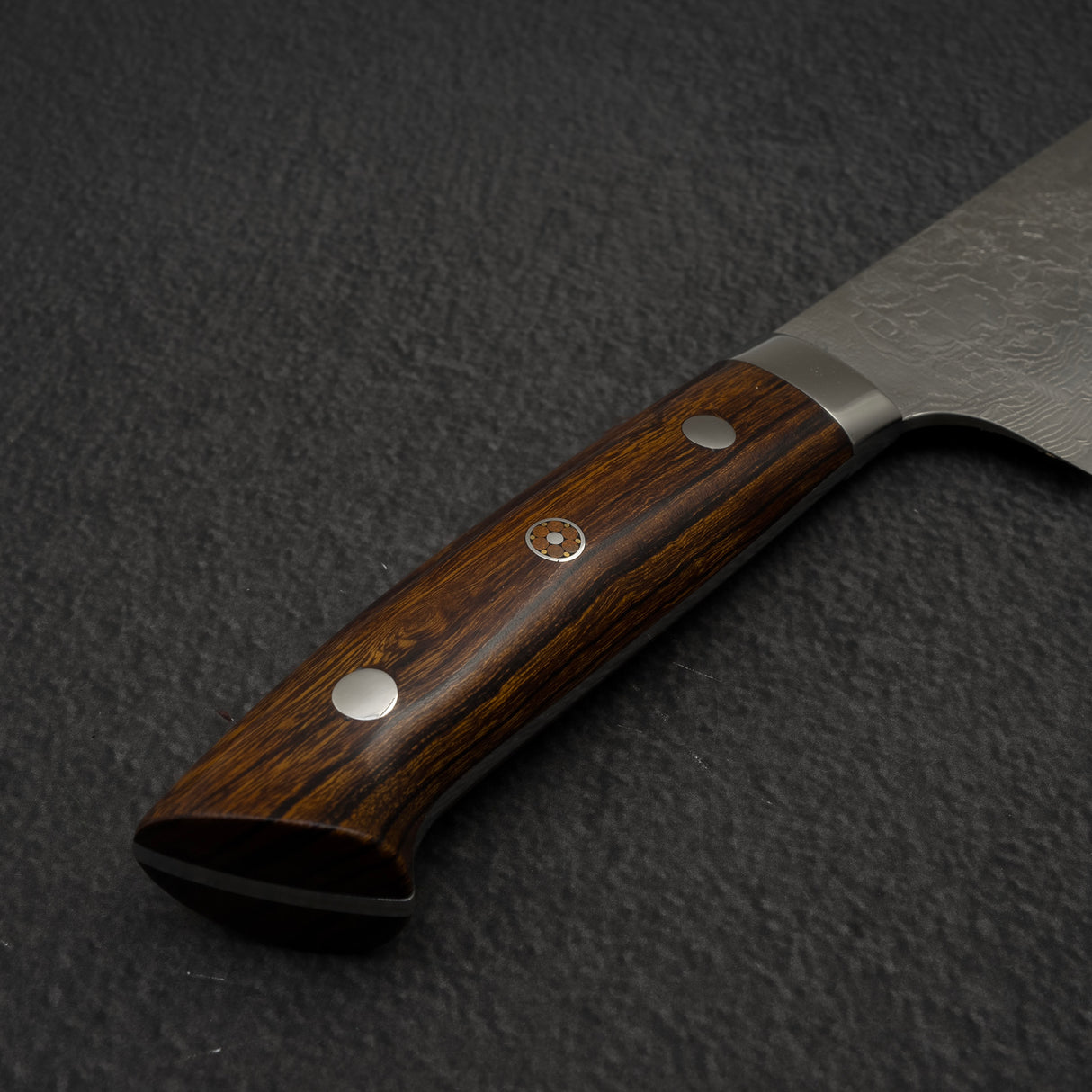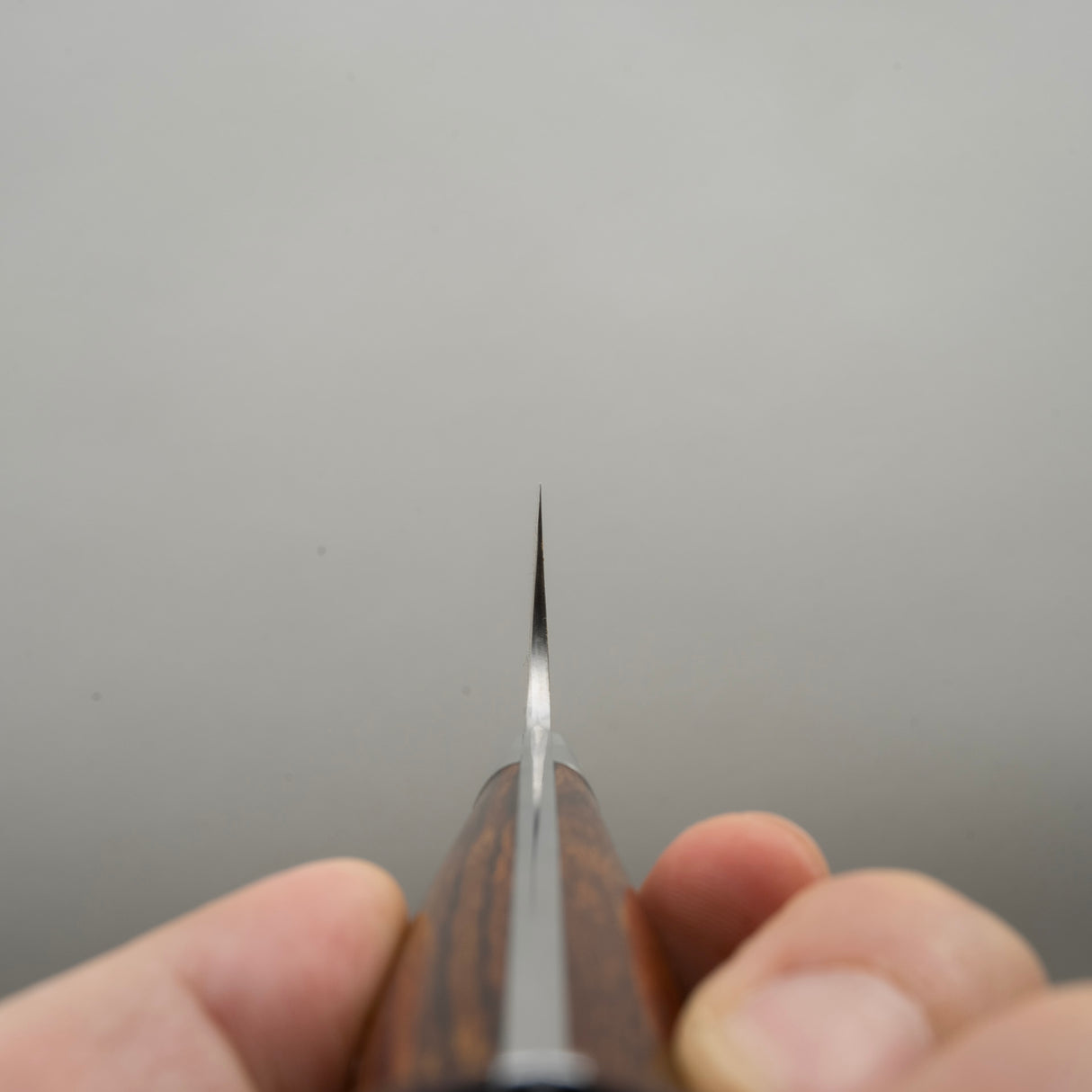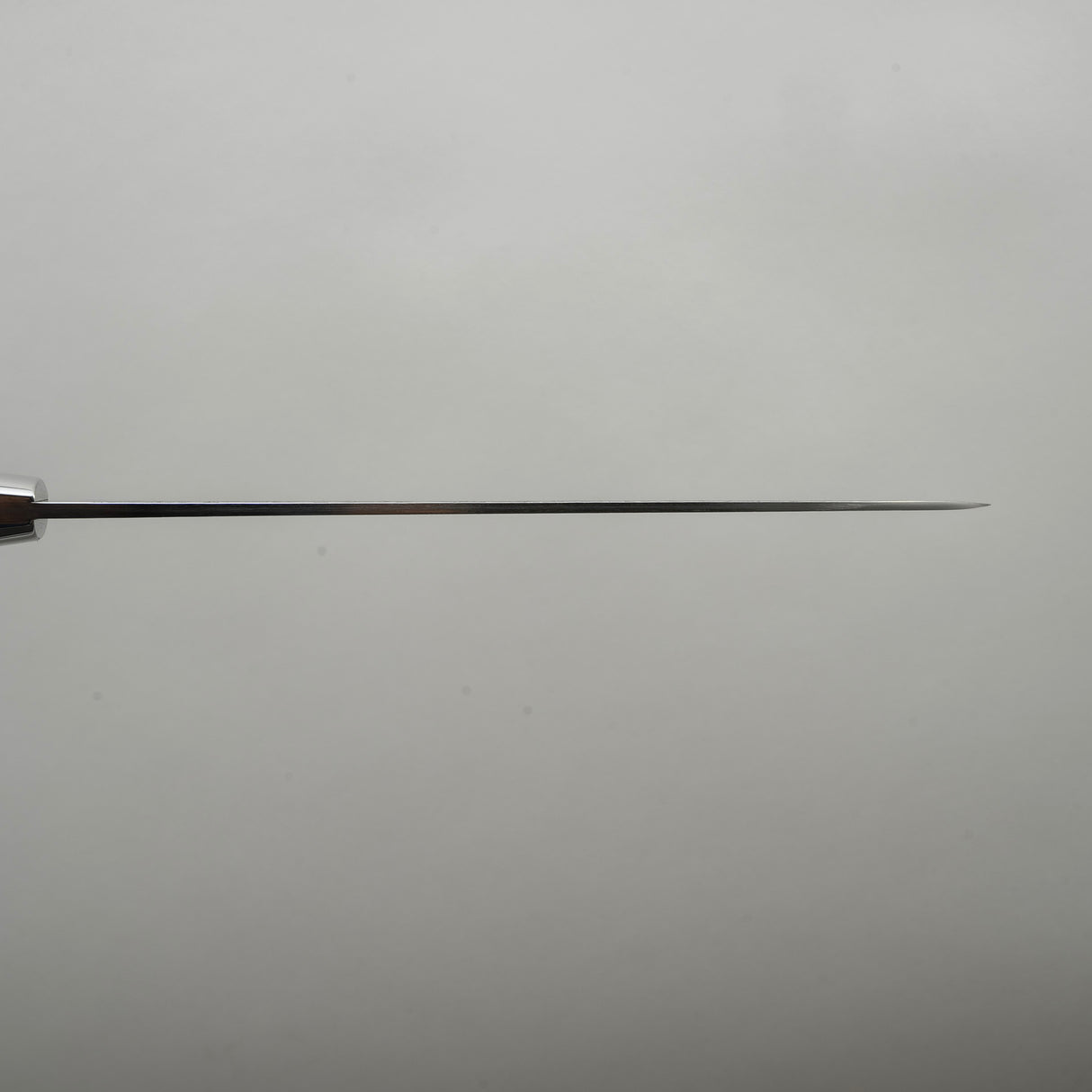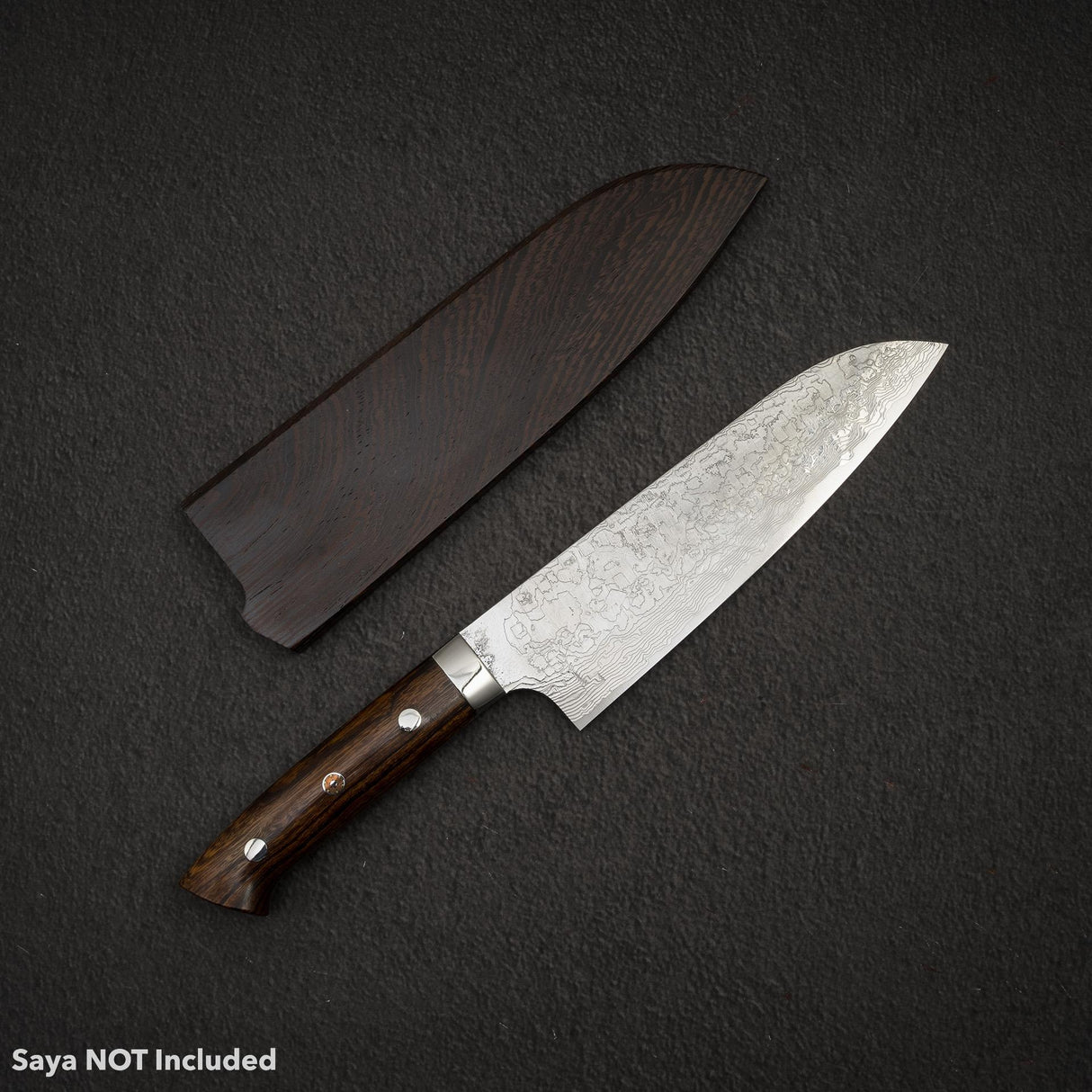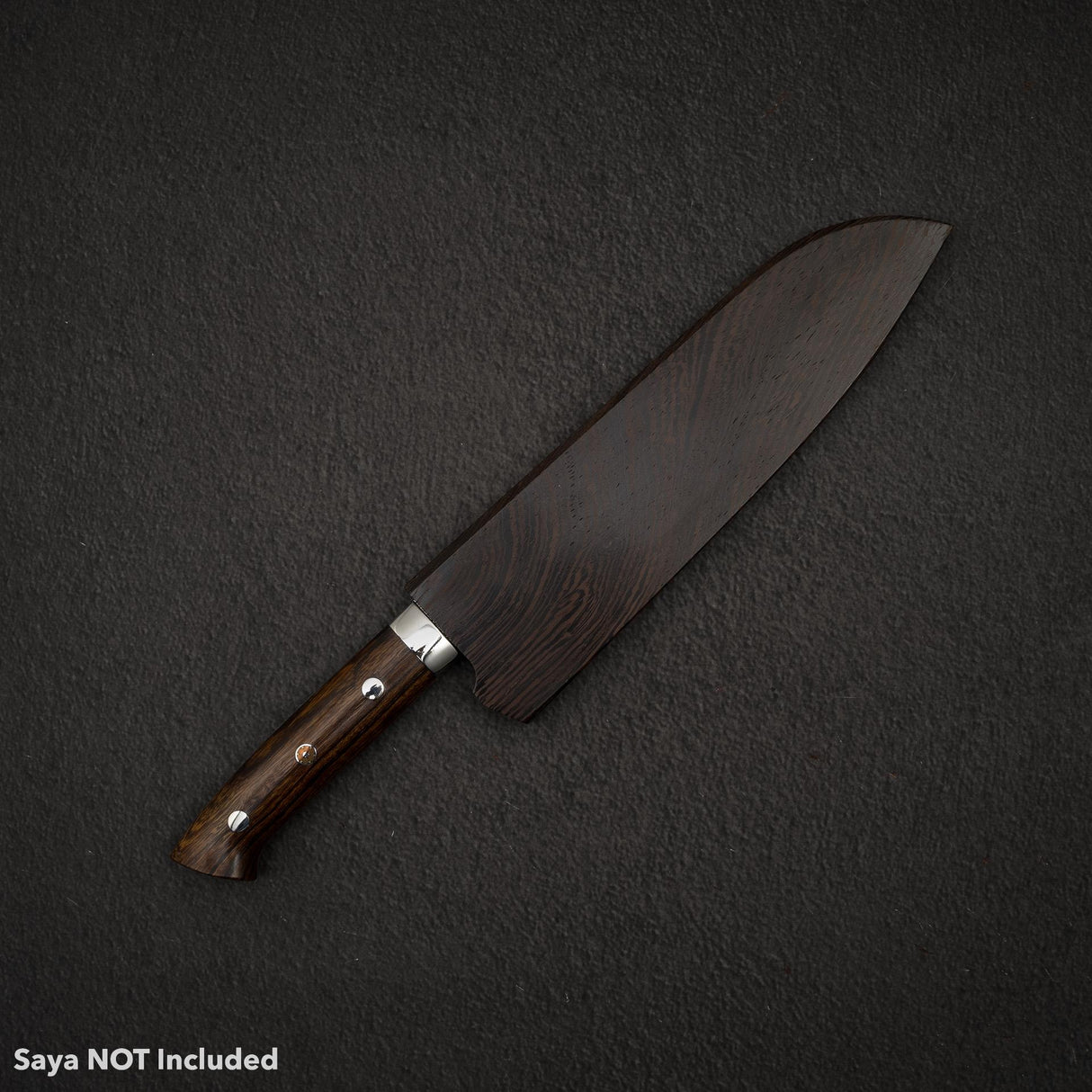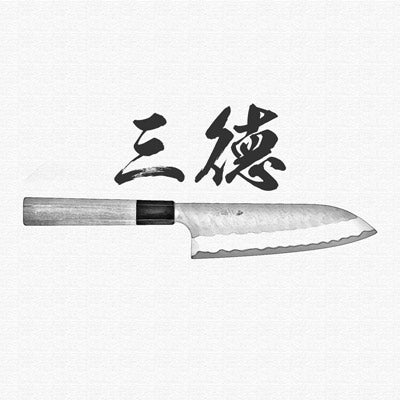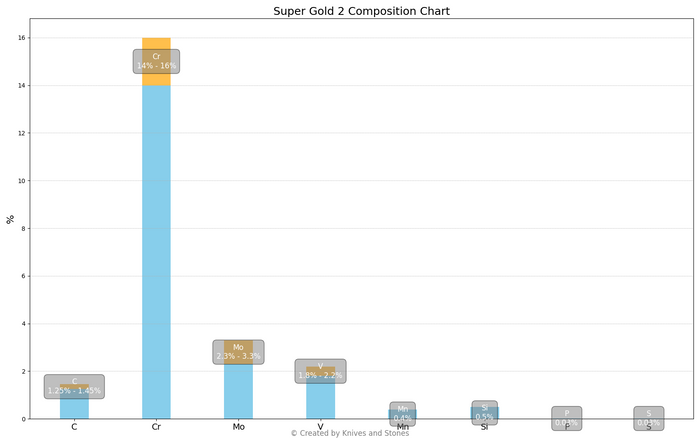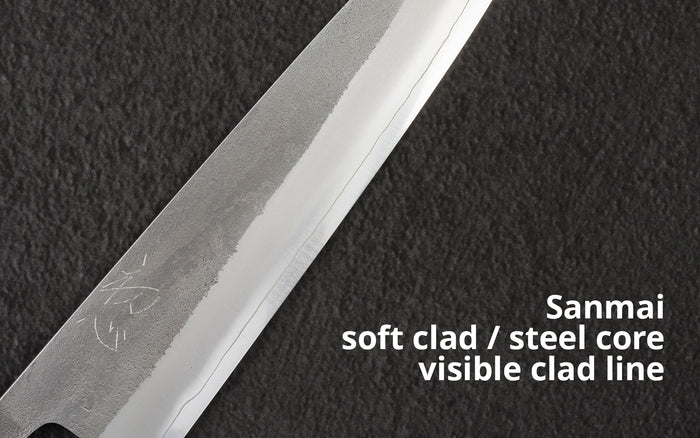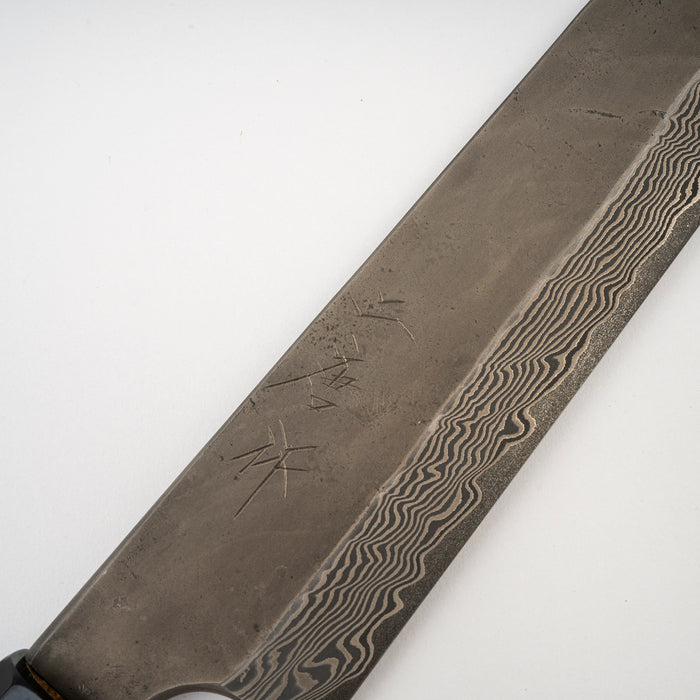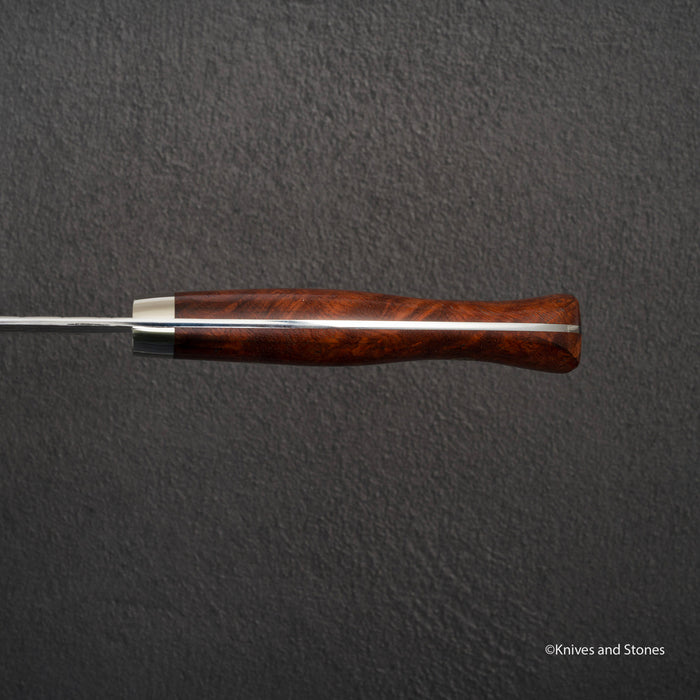Takeshi Saji Diamond Damascus R2 Santoku 180mm with Ironwood Handle
Takeshi Saji Diamond Damascus R2 Santoku 180mm with Ironwood Handle is backordered and will ship as soon as it is back in stock.
Pickup available at 2 Bishop St
Usually ready in 24 hours
Detailed Specifications
| Line | Saji SG2 Diamond Damascus |
| Profile | Santoku |
| Bevel Type | Double Bevel |
| Weight | 230 g 8.11 oz |
| Edge Length | 179 mm .7.05 inch |
| Heel Height | 49 mm .1.93 inch |
| Width @ Spine | 2.6 mm 0.1 inch |
| Width @ Mid | 2.0 mm 0.08 inch |
| Width @ 1cm from Tip | 1.2 mm 0.05 inch |
| Steel | SG2 / R2 | Powdered Stainless |
| Blade Construction | Sanmai - Stainless Clad |
| Hardness (HRC) | 62 - 64 |
| Surface Finish | Etched |
| Handle | Coke-bottle Shaped Western |
| Region | Takefu |
| Best for |
|

| Pros | Cons |
|
|
|
Care Instruction
- Don't cut hard things! Japanese knives are brittle so bone hacking is a NO NO!
- Wash with neutral detergent after use, and wipe dry;
- Please don't wash knife with dishwasher, it will damage the wood handle;
- Be careful not to leave the knife close to a heat source for a long time;
- It is a lot more dangerous to cut with a blunt knife than a sharp knife!
- It is best to sharpen a Japanese knife regularly on a waterstone.





